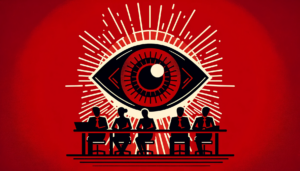Practical strategies for more connected workplaces
- 6 Min Read
Leaders are no longer the connector, they must become the facilitator. Monique Russell offers 5 practical steps HR can take to make employees feel more connected.
- Author: Monique Russell
- Date published: May 24, 2022
- Categories

In order to slow down the revolving door of employees leaving the workforce, improve corporate reputations, and develop an engaged, connected organizational culture long-term, focusing on human connection in the workplace is a must. How can we re-structure the brand to be viewed as helpful, positive, and progressive?
I was working with a group of senior managers who were individually considering leaving their organizations. Each leader desired strategies that would help them to communicate more effectively with senior leaders, determine their next career move and find ways to better take care of themselves. At the root of it all was a desire for internal and external connection.
Leaders want answers to the questions:
How can I get my team more engaged?
How can I get my team to feel more connected?
How can I increase engagement?
How can I help them manage/navigate exhaustion and burn-out?
Maybe you are asking a few of these questions too. The solutions require practical answers and innovative approaches to make work enjoyable for everyone and the consultative HR approach provides that. But, how exactly do we increase connection at work? What new insights and approaches will allow us to truly make the workplace one of progress and ease versus one with fear and burnout?
One possible approach is providing individual and collective skill development through the support of coaches. Coaching helps individuals to deepen self-awareness, challenge themselves and make meaningful decisions about how to experience work and home. It is a joint process that supports employees and employers in taking ownership and personal responsibility for making a culture of success.
Another approach is empowering leaders and employees to focus on wellbeing. Exhaustion and burnout are leading topics of discussion for many leaders which can lead to increased conflict when left unaddressed.
5 ways HR can make employees feel more connected
Foster Creativity
Creativity is needed to think of new out-of-the-box ideas to support leaders and employees. No longer must the perception of being the “policy or compliance police” precede human resources professionals and the department. Unconventional ways of facilitating healing and rest must be explored.
Master the Skill of Influence
Influence requires gaining an understanding of those you intend to lead. Performing a communication, personality, and goal analysis on leaders will empower human resources professionals to find better ways to connect with those they serve.
Provide Structured Mentoring
Adopting a mentoring approach allows human resources to be taken more seriously and position themselves as strategic guides.
Integrate Regular Coaching
Coaching helps human resource professionals maximize their performance and by extension those they support.
Leverage Internal Marketing
The skill of marketing ensures that gaining “buy-in” is accelerated, and identifies which leaders and teams can benefit from the most creative and strategic approaches HR can offer.
Leaders are no longer the connector, they must become facilitators
When HR becomes a consultant and mentor to leaders, leaders no longer need to focus on filling the gap as a connector in their teams. They get to facilitate connection with mentored guidance from HR. The difference with this approach is that leaders will focus on:
- creating spaces that foster psychological safety
- accounting for what people are facing in their daily lives
- integrating varied modalities of conversation
- providing space for reflection and integration– all through the skill of facilitation.
Learning the art of facilitation is a win for the organization, a win for the manager, a win for the employee, and a win for the team.
5 places to practice the skill of facilitation right now
- Small-Group Connection Conversations
Facilitating Group Coaching among peers creates opportunities for shared problem-solving, breaking down of silos, internal networking and deeper connection at work. - Employee Resource Groups
Employee Resource Groups provide significant opportunities to facilitate belonging and provide a source of wellbeing while simultaneously improving organizational goals in recruiting, mentorship, diversity and inter-departmental collaboration. - Un-conventional Training Topics
Exhaustion and Burnout reduce when people are able to find solutions to their problems. Training topics on Financial Wellness, Parenting Strategies, and Digital and Physical Detoxing provide real time, practical ways to increase engagement at work. - Scripting for Managers and Leaders
Managers and Leaders are experts in their craft, not in communicating effectively. Scripting reduces the time leaders take to think of what to say, how to say it and build connection. - Human Resources as Mentors
Being a mentor in the organization allows HR to develop a strategic role with the C-Suite and improve the brand with the management team. Managers begin to ask HR questions like, “what do you have to help me with a specific problem vs what do you have to help me with a specific person”? This automatically establishes a collaborative problem-solving partnership.
It may seem as though you’ve heard these ideas before. Or, that these approaches have already been tested and tried. I encourage you to ask yourself, “how well did I implement the ideas?”
“Life is simple, but to keep it simple is complicated”(Sadhguru)
Conclusion
When selecting a coach or partner to help you with the skill of facilitation, look for people with skills and a background in coaching, instructional design, performing arts, sales, and marketing. Be clear on the outcomes you want to experience and review the approach and curriculum that will be designed to help you get there. A multi-pronged approach in skill development is needed for HR, employees, and leaders. The approach must include awareness of modern changes in the industry and workforce. These approaches only work with leaders, teams and organizations that are ready and willing to change the status quo, and position themselves as industry leaders.
Monique Russell is the global communications expert you want on your team. She teaches leaders and teams how to have positive and productive relationships at home and work using effective communications tools and strategies through consulting, training and group coaching programs. She is the author of the Ultimate Speaker’s Guide and the book Intentional Motherhood: Who Said it Would Be Easy, and host of the Bridge to U podcast. Connect with her on: LinkedIn: www.linkedin.com/in/clearcommunicationcoach Subscribe to the podcast: Bridge to U Visit her website: www.MoniqueRussell.com









